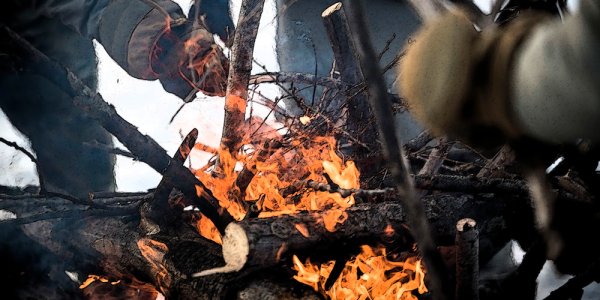

Editor’s note: This article is brought to you by the National Apartment Association Education Institute, which also helps self-reliant veterans find careers in residential property management. Learn more here.
Once a long time ago, I was forced to go to the Survival Evasion Resistance and Escape school, or SERE. A good chunk of the experience teaches Boy Scout knowledge to help you not die in the woods — important things, like figuring out what mushroom is poisonous, or how to make terrifying-looking water drinkable. Others were a bit more focused, like using 550 cord to get out of just about any situation, or how to use a signal mirror to flag down a helicopter and escape the bear-infested wilderness. Elements of fieldcraft may matter less and less to the average member of the military, but you never know when you, too, could be stuck in a forest with a lack of potable water.
Here is the Task & Purpose list of essential fieldcraft knowledge to survive your next field op. The items below are not an exhaustive list, but they relay what actually matters when you need a rock or something to MacGyver your life.
1. Making field coffee
Photo illustration by Brad Howard

The military practically runs on caffeine. When Pakistan cut off our supply of energy drinks in Afghanistan in 2010, we resorted to desperate measures to keep our fobbit enclave running and free of withdrawal headaches. Take a coffee cup or any mug, put coffee at the bottom, fill with hot water. Cover for five minutes. Push a filter down and allow the coffee to permeate up. Boom, caffeine. It’s not pretty, but it works.
2. Providing cleanish water
Photo illustration by Brad Howard

A lot of water sources in the wild are filled with bacteria and parasites that your soft gut just isn’t used to. If you have a canteen or water bladder, use just a touch of iodine to clean the sucker. One iodine tablet in a 30-ounce bottle of water will make it safe to drink after about 10 minutes. Note of caution: Too much iodine will make your day vomit-y. Also, for all you doomsday preppers, iodine has a secondary use as a way of treating mild radiation poisoning.
3. Using a signal mirror
Photo illustration by Brad Howard

A signal mirror is a tiny mirror that you can use to reflect the sun into a pilot’s eyes to make him aware that you have not been eaten by bears. It sounds silly, but in the field — or at sea, or wherever — a small mirror could be a lifesaver.
4. Become the firestarter
Photo illustration by Brad Howard

Look, this one is really easy. If you go into the field, bring a firestarter, which is a spark-making slice of metal, or a lighter, or both. Banging rocks together or rubbing sticks like a mad man to make fire means you are extra screwed.
5. Animal snares equal easy food
Photo illustration by Brad Howard

Sometimes you need to eat a tasty squirrel to get by. Take a bit of wire and tie a loop in the end of it. Boom: You got a snare. This creates a necktie that a squirrel can pop its head into. Then it can’t get out. If you don’t have wire, split 550 cord can work in a pinch: Just make a tiny noose and tie the other end of the string to a small sapling or elevated position. Huzzah, the trap is set!
6. Water traps can get you hydrated in a hurry
Photo illustration by Brad Howard

With some expertly placed 550 cord, you, too, can have a way to save some precious rainwater. By propping a blanket or tarp over the makeshift line, you can create a wide bucket to snag whatever moisture comes your way. (Just remember to use iodine to treat it.)
7. A pup tent will let you sleep like a baby
Photo illustration by Brad Howard

Tossing a survival blanket over top some 550 cord is a great way to have that cabin in the woods you always dreamed about. Of course, it is much cozier, and the floor can be a bit uneven. Now to make it spicy and warm, find a bunch of brush to help your concealment.
8. Sharpen that knife
Photo illustration by Brad Howard

Bringing a small whetstone with you to the field is an essential way to keep your trusty blade ready to go. There is nothing worse than a dull knife — except not having a knife to begin with.
9. A tourniquet for when things go wrong
Photo illustration by Brad Howard

This is nice to have in case you screwed up the knife-sharpening part and stabbed yourself by accident. If you need to apply a tourniquet — and chances are you don’t — make sure to write down the time you applied it for first responders. Making one just takes a stick and a piece of t-shirt. Wrap the cloth around the extremity, knot it off, insert the stick, and turn it to apply pressure.
10. Bring a headlamp
Photo illustration by Brad Howard

This one sounds simple, but having a headlamp makes life one thousand times easier. Fumbling around in the dark can be dangerous. Plus, headlamps look super cool.
Those are the ten essential tips for fieldcraft from Task & Purpose. Of course, if you are admin or finance, it’s pretty unlikely you will ever need to catch your own rainwater or snag a squirrel for dinner. But it sure is nice to know how, just in case.
